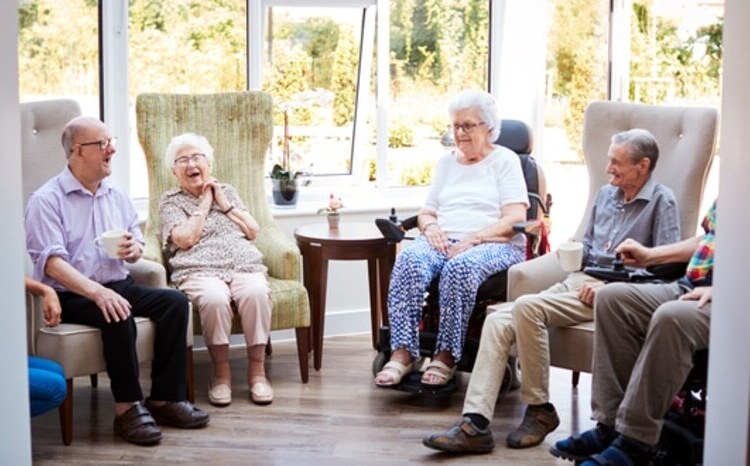Wireless days
- 4 June 2009
| Abertawe Bro Morgannwg University Hospital NHS Trust |
 |
| Winner: Best use of wireless healthcare sponsored by Cisco |
 |
Abertawe Bro Morgannwg University Hospital NHS Trust wanted to improve its discharge procedures – and ended up with an extensive wireless infrastructure that has delivered many other benefits as well. This won it the best use of wireless healthcare category of last year’s BT e-Health Insider Awards, sponsored by Cisco. Stephen Pritchard reports.
Installing an enterprise-wide wireless infrastructure is never an easy task. Combine installing one with the special needs of a clinical environment and the job becomes all the more onerous. Security, usability and reliability all have to be optimised.
The benefits, though, can more than justify the effort involved. This has been the experience of Abertawe Bro Morgannwg University NHS Trust, which installed two campus-wide wireless LANs, in order to support both clinical and administrative operations. The systems run at the Princess of Wales Hospital in Bridgend and Neath Port Talbot Hospital.
First steps
The journey to an extensive wireless infrastructure – supporting mobile computer carts, laptops and wireless, IP-based phones – started with a need to tackle a longstanding problem – the quality and timeliness of patient discharge summaries.
“The manual process of discharge summaries was a bit problematic,” recalls Ian Phillips, trust associate director of information management and technology. “They were triplicate forms that were often illegible. So we had a conversation internally about whether we could make the process electronic.”
The trust set out to make the transfer of care between consultants, wards and GPs as seamless as possible, at least from the point of view of electronic records.
It had already done some work integrating pathology and radiology records, and PACS. “We had a number of clinical records held electronically, but they were not patient focused, but within A&E, theatre or pathology,” says Phillips. “We needed to look at how to link together the records from the same patient, in a safe and accurate way.”
The trust built a single database linking all its records to patients, enabled by Microsoft’s Active Directory system. Doctors and nursing staff could then view records for each patient, through a web-based clinical portal.
Once this was in place, a range of possible changes to working practices were opened up. The clinical portal made it possible for staff to view patient – rather than departmental – records on a single screen. Providing wireless access to the hospitals’ local area networks meant they could do so while working on the wards.
Paper records quickly gave way to a range of PC-based systems, although as Phillips points out, the trust did not take a one size fits all approach.
“The devices we are using include a wireless [computer] cart, but also laptops and other devices such as those used by pharmacists to verify drugs,” says Phillips. “The consultants use laptops, but also the carts.”
One decision the trust IM&T team did make was not to use personal digital assistants, but to opt for full-screen equipment. “Our applications are feature rich, and there is a lot to display,” he says.
New ways of working
The trust has also replaced pagers with portable IP telephones, connected to the wireless network. “We have reduced the number of unnecessary ‘bleeps’ by 43%,” says Phillips.
Achieving this, however, required a considerable investment in building a robust and secure wireless network. The planning stage received particular attention from the IM&T team. “We had to make it work seamlessly; the whole site is covered by a wireless access network which is pervasive,” says Carl Mustad, the trust’s assistant director of information technology.
Even though the network is wireless, vast quantities of cabling – some 32 kilometres – had to be installed to provide the backbone for it. “With planning, and by working with the nurses on the wards, we were able to install this in 12 weeks,” Mustad says.
The trust worked closely with network equipment vendor Cisco and Informing Healthcare to ensure the right levels of security as well as wireless coverage.
Cisco’s ACS access control ensures trust devices connect securely to the network. It has the added advantage of detecting any unauthorised devices, such as a consumer wireless router plugged in by a member of staff. Laptops are encrypted and the carts hold no data locally, as the application is web based.
“Each device, whether it is a laptop, a cart or a tablet PC has to be authorised via our database, and we use user authentication on top of that,” Mustad says.
Some further fine tuning was also needed to make the whole system practical, especially for ward-based clinical staff. The trust looked at specialist laptop PCs with extended batteries which could run for nine hours between charges, but staff reported back that they were too heavy to carry around all day.
Instead, doctors use lighter laptops, which can be docked to charge. Each ward also has to cart-based PCs, which work for four or five hours between charges.
Such feedback is the main reason the project has been a success, Phillips and Mustad suggest. The trust maintained close collaboration between IM&T, management and clinical staff throughout the planning and deployment stages, and the result is a robust system that is popular with its users.
“The agenda was not ‘can I have a new system’ but ‘can I change the way we work,” Phillips says. “It is about changing processes and modifying processes, it is not putting in PCs, flicking a switch and nothing happens in terms of the way we work.”
Faster and more efficient
Nevertheless, the trust has realised benefits. Clinical decisions are made more quickly, and less time is spent trying to track down test results or other records.
Teaching has improved too: junior doctors can spend more time listening to their consultants’ work with patients rather than chasing files and folders. Some consultants even grade their juniors on how well they fill out the electronic records.
“The anecdotal evidence is that that since we went wireless, senior staff spend more time on the shop floor, giving advice to junior doctors,” Mustad says.
And, measured against the original objective – improving the speed and accuracy of discharge paperwork – the project has been an astounding success.
“Discharge summaries were often a source of complaint from GPs both in terms of quality and timeline. Now 89% of electronic transfer of care documents reach GPs within a week. Ideally we would like them completed in a
day,” says Phillips. In the future, the trust would like to add email and web access to the mobile devices too.
“It was about a lot of streams coming together,” Phillips says of the project. “It was about wireless, but also about changing processes. It was about IM&T enabled change.”
The E-Health Insider Awards 2009 in association with BT:
The closing date for entries to this year’s E-Health Insider Awards in association with BT is fast approaching. Information about this year’s awards, along with details of how to enter, can be found on the dedicated website. If you’d like to see your work featured on EHI next year, why not enter now?
Other links:
More about the BT e-Health Insider Awards 2008: The BT e-Health Insider Awards: live on the night
More about the best use of wireless healthcare, sponsored by Cisco




